
|
| Cosmin Bumbut, photographer. |
Cosmin Bumbut (b. 1968) is a prolific
photographer from Bucharest. He graduated from that city's Theatre and Film Academy, and his book "Transit,"
won the `art book of the year award' at the Romanian National Book Fair in 2003.
His wide range goes from fashion photography to photojournalism and portraits, typical of his generation's
eclecticism and inherent dynamism with the tools of digital photogrpahy. As seen in the top photo, he
uses imaginative theatrical set-ups to transmit enticing story lines and moods.
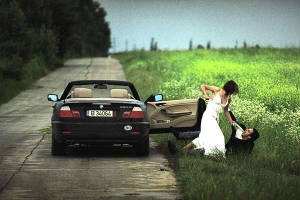
|
| Cosmin Bumbut, photographer. |
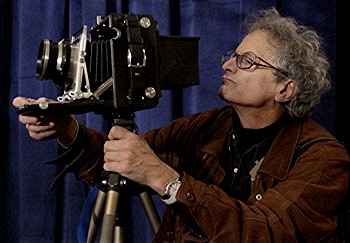
|
| David Burnett with his Speed Graphic |
"The satisfaction
comes from working next to 500 photographers and coming away with something different."
- David Burnett
David Burnett "works" news, features,
people, landscapes, and the sciences. He is known as someone who can, no matter how challenging the assignment, return with the picture.
more on David Burnett
|
|
| Holgamania strikes! The cheesy Holga can do magic in the hands of a master. |
The Holga is riding a surge of popularity among camera
buffs, which is kind of nutty, because it is a famously lousy camera. Made in China as a child’s toy and priced at about
fifteen dollars, it leaks light, has an take-up spool that loosens the film, and has a "glaucomic" plastic lens.
There’s no shutter speed, except for a lever that
goes back and forth between sunny and less sunny, and the way to get it on a tripod is to ‘tie’ it on with rubber
bands.
Ah, but herein lies the challenge. Just jam a piece of
cardboard under the spool, tape the seam leaks with duck tape, and drill in a standard tripod socket. For a night shot, use
needle-nose pliers and yank out the little metal spring that 'operates' the shutter, then count the time exposure. With these
fixes it’s possible to take awesome pictures.
The prize-winning campaign photo at the annual "Eyes of
History" competition of the White House News Photographers Association was taken by David Burnett-- with a Holga. In the right
hands this laughably crude box performs miracles with light and shadow.
go to surreal nature
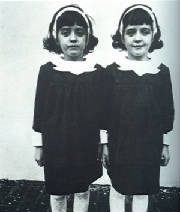
|
| Diane Arbus, "Identical Twins," Gelatin-silver print, 1966. |
"Revelations" was the first major retrospective
of Diane Arbus in 40 years. It was shown in New York Essen, London, and Barcelona. There is a ‘cringe’
factor in an Arbus portrait. An awkward complicity between the subject and photographer pulls us into a weird intimacy.
The photographer knew what she was going after and the poser altered
his agenda for the moment, leaving us as interlopers. And therein lies the humanizing drama of the thing. The nudists and
dwarfs continue to haunt. She takes the viewer to someplace between appearance and identity, theater and reality, and illusion
and truth.
"It's important to take bad pictures.
It's the bad ones that have to do with what you've never done before. They can make you recognize something you hadn't
seen in a way that will make you recognize it when you see it again."
- Diane Arbus
go to the Diane Arbus Revalations tour
"Nothing
is ever the same as they said it was. It's what I've never seen before that I recognize."
- Diane Arbus
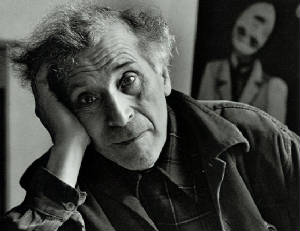
|
| Marc Chagall, by Philippe Halsman, Venice, 1951. |
Philippe Halsman
(1906-1979) gained fame for his bold portraits and fashion photography after
setting up his Paris studio in 1932. After the German invasion he couldn't get a visa to the U.S. because he was
Latvian born.
Albert Einstein, who
knew Halsman's sister, intervened with the authorities on his behalf.
Once in America he got a job with Life magazine, and
over the next 20 years he shot more than 100 covers. His portraits of Einstein and Marilyn Monroe are classics.
Photographers on the job
doing their thing:
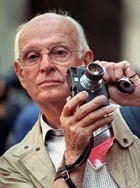
|
| Henri Cartier-Bresson (1908-2004) |
Many photographers consider Henri
Cartier-Bresson the most influential of the past century. He always
waited for the "Decisive Moment," elevating snap shots to a refined and disciplined art. He said
he "prowled the streets all day, feeling very strung-up and ready to pounce, determined to 'trap' life,
to preserve life in the act of living."
In his global travels, with Leica in hand, he captured
the spontaneous and unpredictable, telling a story crisply, in one striking image. He valued the brilliance of 'man
facing his fate;' his sense of human dignity was essential to his work. He called the decisive moment "the simultaneous recognition,
in a fraction of a second, of the significance of an event as well as the precise organization of forms which gives that event
its proper expression.
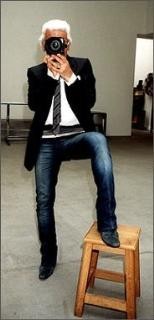
|
| Karl Lagerfeld (1938- ) |
Karl Lagerfeld, sleek and pony-tailed, is
known for his exacting demands as a fashion designer. He is an equally precise photographer who reveres the architecture of
the human body and seeks the unexpected moment. His technique, lighting, and composition rival that of his most accomplished
contemporaries. Among his published volumes are "Akstrakt," "Escape from Circumstances," Waterdance," and "Bodywave."
His eye for photography parallels a legendary design career. At 14
he moved with his family from Hamburg to Paris. Two years later he won a fashion design award working for Pierre Belmain.
At 20 he worked for Jean Patou, then freelanced for Fendi, Valentino, and Cloe. By 1982 he was artistic director at Chanel--
updating the chic line with offbeat fabrics and colors. He launched his own KL label in 1984 and has also designed costumes
for movies. He always keeps his camera close at hand.
Corbis is the largest photo stock house
in the world. It's easy to search and get royalty info.
go to Corbis
Wild Skies
Photo-op skies belie the destructive force of Katrina--
tearing through the gulf states and forcing relocation of survivors-- many who have never returned, many whose
homes may never be rebuilt. As for the strategiclly irreplaceable city and port of New Orleans (which quietly keeps the U.S.
economy on track), it will rebuild slowly, but tears, confusion, misery, and uncertainty remains years afterward.
more Katrina skies

|
| Photographer Mitchell Funk |
Mitchell Funk is the patient, persistent master of intense color. "The color is there; I don't pump it up
in hue or saturation". The rich brillance of his photos depends on light, of course.
"If I see that the light isn't right, I'll keep coming back until it is."
go to Mitchell Funk
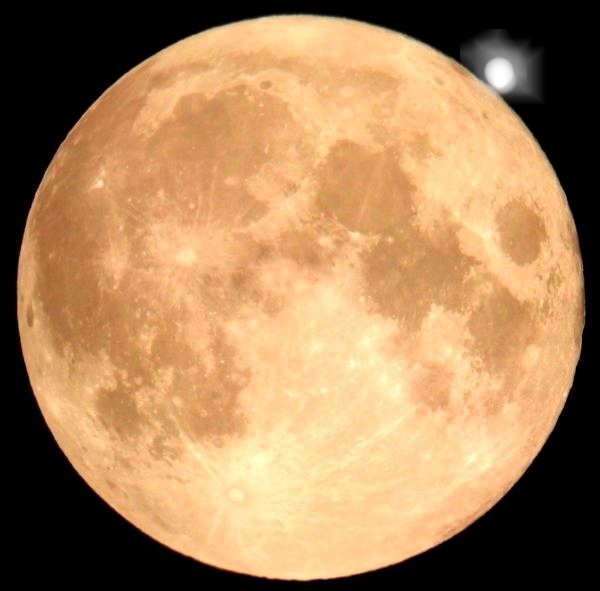
|
| Antares comes back into view |
Have you ever seen a lunar occulation?
If not, you should. Of course the viewing time depends on where you live.
The moon, in orbit around Earth, will drift, at least
from our viewpoint, in front of a distant star or planet. So, for a short time, usually for about an hour, the object 'winks
out' instantly (dissapears from view)-- and then emerges on the other side of the moon. Our moon played this delightful
visual game with the red, super-giant star Antares. It is such a bright star and it was fun to
see it 'hide' behind our moon for a while. Starry nights are images of mystery that leave one breathless.
|
 |
 |
 |
Paris Landmark Upended
Here is a huge installation of a giant replica of a vintage view camera
making an upside-down image of the Eiffel Tower. Crowds delighted in the spectacle to celebrate the Art
of Photography.
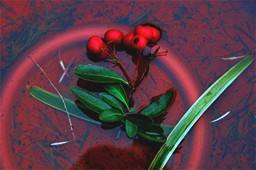
|
| Paul Davis, photogrpher. |
There's something subtlely mystical in the drama of Paul Davis photographs.
With so many digital dynamos around the world, each storing
thousands of intriguing images, it's hard to keep track of more than a few. A great way to acquaint yourself with new
photography is to go to Profotos-- a premier website that showcases photographers online.
go to Profotos
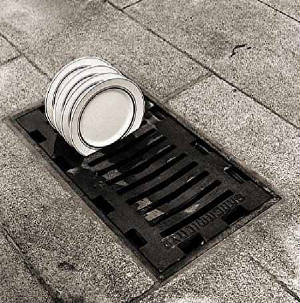
|
| "Dish Rack" by Chema Madoz |
The camera of Chema Madoz focuses on nuero-skewing
and delightful imaginings. Enjoy.
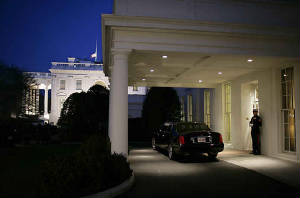
|
| "Night Shift" from Time Magazine photo essays |
TIME has a
bigger web presence and lots of photos for your viewing.
 |
 |
Start Shooting!
Submit "Your Shot" for possible publication in National Geographic, OR, Upload your
best photos to "My Shot" and make your own National Geographic web page for slide shows, galleries, and more.
|
|
 |
 |
go to National Geographic
Enjoy lovely images of Asia by photographer
Scott Stulberg:
go to Scott Stulberg
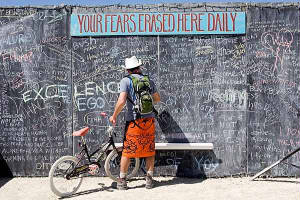
|
| Photo: Gabe Kirchheimer. |
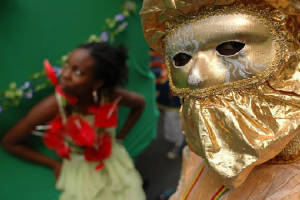
|
| David Alan Harvey Closing In |
Your fears erased here daily.
What photographs tantalize you? When do you grab your camera? What do you see? What do you not see? What do
you think you see? What do you hope others see? Where do you find the light?
David Alan Harvey is a photo
essayist with the eye of a painter. He doesn't stay in the background or use a long lens. He gets up close and personal--
and his photos are about as close to reality as you'll get.
"The closer you get, the more invisible
you become."
- David Alan Harvey
go to David Alan Harvey

|
| Three Buddhas, Leshan China. Gary Braasch. |
Gary Braasch:
"It's always been hard for me to stop
taking pictures, no matter what the project or the assignment.
"The entire planet is there for me, and
there's a connection between me and the world."
go to Gary's environmental photography
Nikon has a complete photo education website. Enter contests,
write essays, and upload your best shots.
go to Nikon
Enter the world of photojournalists, our
global documentarians:
go to photojournalism
Arnold
Newman set the standard for stylistic integrity and captured the essence of his subjects.
| The Eyes of Arnold Newman |
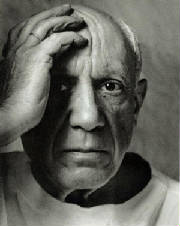
|
| Pablo Picasso in Vallauris France, 1954. Arnold Newman. |
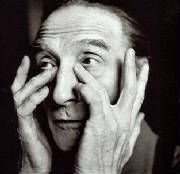
|
| Painter Marcel Duchamp by Arnold Newman. |
"We do not take pictures with our cameras, but with our
hearts and minds."
- Arnold Newman
Arnold
Newman was the master of environmental portraiture.
He instinctively interacted with the people in front of his lens, placing them in carefully composed settings to capture
their work and personality-- writers at their desks, painters in their studios, composers seated at pianos, presidents and
prime ministers in stately settings.
He said "I am interested in what motivates individuals,
what they do with their lives, their personalities, and how I perceive and interpret them... perhaps of even greater importance,
is that, even if the person is not known or already forgotten, the photograph itself should still be of interest or even excite
the viewer. That is what my life and work is all about."
more on Arnold Newman
 |
 |
|
"I prefer the risk of
failure in experi-
mentation to the alternative of safe repetition and boredom.
"Rigid rules, regulations, official
schools and current trendy 'with it' styles needed by the unimaginative are deadly to creativity.
"History is full of 'Golden Rules,'
laws of composition and other indispensable guidelines. Yet not one great image has ever been created through their application.
Style is a natural result.
- ARNOLD NEWMAN
|
|
 |
 |
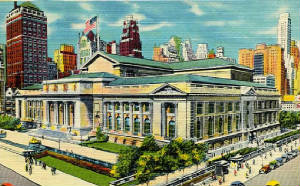
|
| The New York Public Library |
Gallery of Images
The New York Public Library is
open for viewing.
You can burrow into oddities, rummage through the rare books, and dig for prints, posters, dust jackets, menus, and cigarette
cards.
Parts of the site are not fully integrated so you can get
lost in the old card catalog with no librarian to help out. Still, it's fun to poke around this fabulous collection
of a quarter of a million images.
Everything dated before 1923 is in the public domain and
free. You may print, download, etc. It's
worth looking in to.
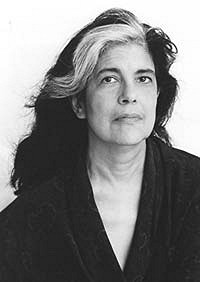
|
| Susan Sontag (1933-2004) |
Susan Sontag, probing writer and social
critic, suffered from leukemia for 30 years-- and wrote of the struggle for health in one of her most famous books: `llness
as Metaphor.' As her friend Leon Wieseltier (literary editor of The New Republic) said, "She showed you things you hadn't
seen before; she had a way of reopening questions." She was a master synthesist who tackled broad, difficult, and ellusive
subjects-- like photography.
Sontag's 'On Photography' deserves
a re-read. She describies a subject we take much for granted (especially in this age of the indiscriminate digitized snap)
and shows how photography has deeply changed us and how we view the world.
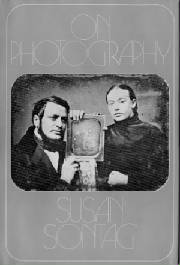
|
| "On Photography," Susan Sontag, 1973, Farrar, Straus & Giroux. |
"We consume images at an ever faster rate and images
consume reality."
- Susan Sontag
"The only interesting answers
are those that destroy the questions."
- Susan Sontag
|
 |
 |
 |
|
Yann Arthus-Bertrand has been 'flying with camera' since 1990. His thousands of sky-views seem to refresh our eyesight
and refocus our attention on the wondrous beauty of our planet. Really looking is a virtual vacation-- and an invitation to
reflect upon the our planet's evolution and the future of its inhabitants.
He is the founder and chair of The
Good Planet, a non-profit alerting individuals and governments of the urgent need to grab responsibility and
"work to meet present needs without compromising the needs of future generations”.
Photographer as environmental activist:
"In just fifty years we have modified
our planet's environment far more than in the entire history of humankind. Ecosystems are threatened or failing. Fresh
water, oceans, forests, clean air and arable land are quickly diminishing in quality. We need to act immediately to reverse
these fatal trends."
He has seen it-- from above.
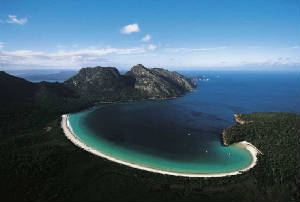
|
| Tasmania, Australia. Photo: Jann Arthus-Bertrand |
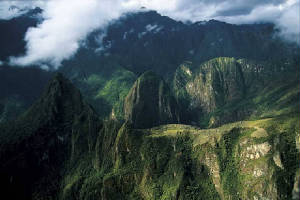
|
| Machu Picchu, Peru. Photo: Jann Arthus-Bertrand. |
go to Yann Arthus-Bertrand
go to Altitude Photo
go to The Good Planet
go to Earth from Above
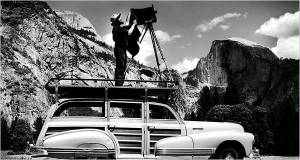
|
| Ansel Adams atop station wagon. Click to enlarge. |
Ansel Adams
visited Yosemite in 1916 when he was 14. He hopped up on a tree stump to get a photo of Half
Dome. Then he stumbled, headfirst, and accidentally pushed the shutter release. In his autobiography he said that the upside-down
image remained one of his favorites. In the photo above, he has hopped onto his woody to get another shot, and another. He
ended up spending most of his life in Yosemite.
Today park visitors try to retrace his
steps. The Wawona Tunnel is a popular passageway to Ansel's "photo-ops." The pros wait for the
exact moment the moon rises or a fallen tree in Siesta Lake goes into shadow.
In the center of Yosemite Valley there's
a gallery where Adams lived for years before his death in 1984. Today it is run by his grandchildren and offers workshops
and 'camera walks.' But many people only know the park through the eyes of Ansel Adams and are disappointed by the reality.
Glenn Crosby the curator of the Gallery
did his own take on 'Moonrise and Half Dome' with the aid of an astronomer who tracked the exact
minute the moon would ascend next to Half Dome. "But it's not the same,' he said. "Someone could be standing shoulder to shoulder
with Ansel and come away with a totally different interpretation." That's what makes photography so personal.
go to Ansel Adams
"A photograph is a secret about a secret.
"The
more it tells you the less you know."
- Diane Arbus

|
| Nicole Kidman as Diane Arbus. Photo: Mary Ellen Mark |
Nicole Kidman portrays photographer Diane Arbus
in the movie Fur, based on a fantastical 1984 biography by Patricia Bosworth.
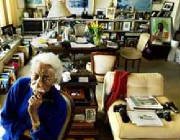
|
| Gordon Parks at home in New York |
 |
 |
Tribute to Gordon Parks
1912-2006
Parks was one of the most amazing men of his time. Often
acknowledged as the greatest photographer, he was also a fine poet, author, piano player, composer, cinematographer, and film
director. Google gives him 1.7 million hits. He was born the youngest of 15, in dire poverty, in Fort Scott, Kansas--
and that is where he was buried, near his parents. He lived an inspiring, generous, powerful life.
|
|
 |
 |
Quang-Tuan
Luong has traveled the continents with his large format camera.
He carries it to mountain tops and into caves. He is the only person to photograph every U.S. National Park. He gets
around carrying a load of gear. See what he carries:
Return to the beginning:
Daguerreotypes Live!
Did daguerreotypists "die out" after the Civil
War? No! There are more photographers using the process now than at any time since 1850.
Charlie Schreiner is a modern daguerreotypist.
Above is his Soup Can, a 2x3-inch plate. For more of his work:
go to Charlie Schreiner
go to Charlie's website
Photography came to the U.S. from Europe in 1839.
In England, William Henry Fox Talbot developed
a way of printing positive images from negatives onto paper. In France, Louis-Jacques-Mande Daguerre
fixed positive images on polished metal plates. Talbot could yield unlimited, cheap copies. Daguerre won out because his plates
had a staggering clarity and brilliance.
A daguerreotype is a unique print, i.e. it can’t be reproduced.
Its reverse-mirror image is visible only when the plate is tilted and illuminated in certain ways.
Despite all the quirks and problems, Americans loved them long after Europeans grew tired of them.
Daguerre plates are pitiless in their candor and magnify blemishes. Albert Sands Southworth and Josiah Johnson Hawes, had a grand studio in Boston, and conducted thousands
of sittings with customized cameras and special lights, resting their reputation on flattering photos.
They also did a big business in post-mortem
portraiture, a standard 19th century genre. Ralph Waldo Emerson and Harriet Beecher Stowe were among their
celebrity clientele. Alive, of course.
Much of the priceless work of Southworth and Hawes
is on view at the American Museum of Photography.
go to "The Daguerreotypes of Southworth and Hawes"
go to The Daguerreian Society
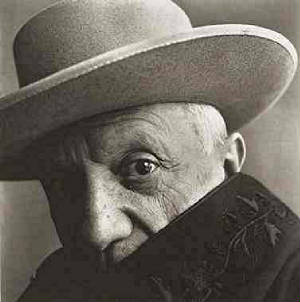
|
| Irving Penn's platinum print from his |
PENN GOES PLATINUM
Platinum prints were popular a century
ago, but when prices soared after WWI manufacturers stopped making the paper.
In the 1960's famed photographer Irving Penn (1917- ) began
a lengthy search to learn the technique. He scoured old journals for ‘recipes’ and tried different formulas in
his Long Island darkroom on weekends. He mixed palladium, iridium, and gum bichromate with both black and color pigments,
and made test collages.
He found that platinum gave a lavish tonal image with rich
blacks, but could be coarse. Palladium gave delicate tones but lacked true blacks. When he mixed the two and coated the paper
multiple times, he could create luminous prints.
As a commercial photographer he made negatives and often
didn’t see a final photo until it was published in a magazine. So he enjoyed the move from studio to darkroom where
he mixed, exposed, developed, and crafter his own platinum prints.
Using chemicals that can be applied by brush, he found
greater freedom of expression. Also, the light sensitive salts were absorbed into the paper fibers, giving the print a sensuous
texture-- dramatically different from the glossy surface of gelatin silver prints.
So he transferred his celebrated photographs into independent
works of art that have subtle, rich tonal ranges, and luxurious textures. Penn’s work is on display this summer at the
National Gallery of Art in D.C.
go to Irving Penn's platinum prints
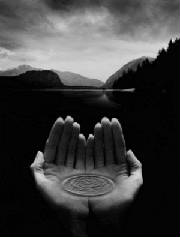
|
| Jerry Uelsmann, Untitled 2003 |
"My art is directed toward the inventive
consciousness of the viewer. The viewer has to complete the cycle, has to project into it in certain ways. All the information
is there, and yet the mystery remains."
- Jerry Uelsmann
|
 |
|
|
|

